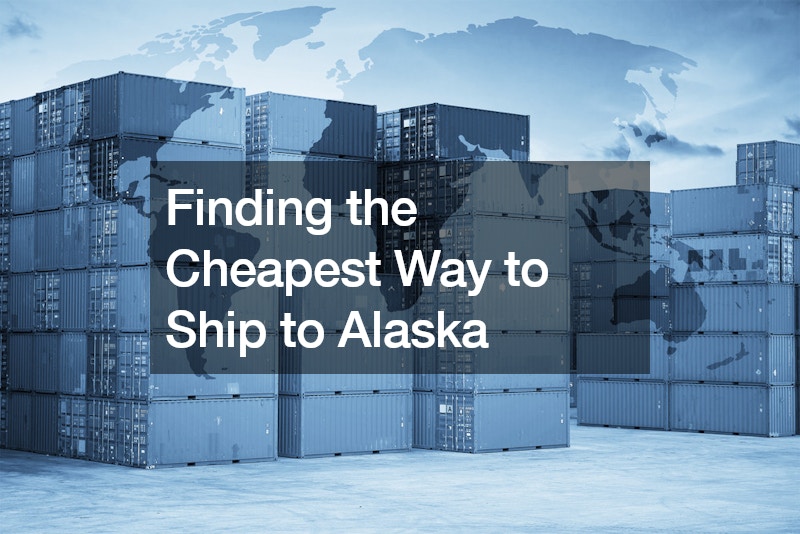

When it comes to shipping packages to Alaska, finding the cheapest way to ship to Alaska is important. With its unique geography and distance from the contiguous United States, shipping to Alaska can sometimes come with hefty price tags. However, there are strategies to help you find the cheapest way to get your packages to the Last Frontier. One approach is to compare rates from different shipping carriers and providers.
Shopping around allows you to find the best deals and discounts available for shipping to Alaska. Some carriers may offer special rates or promotions for certain destinations or package sizes, so it’s worth exploring all your options.
Additionally, consider alternative shipping methods and services that may offer lower rates for Alaska-bound packages. For example, consolidating multiple packages into one shipment or opting for slower shipping speeds can help reduce costs. Another tip is to leverage online shipping platforms and marketplaces that offer discounted rates and bulk shipping options. These platforms often negotiate discounted rates with carriers and pass the savings on to customers, making it a cost-effective option for shipping packages to Alaska.
Be mindful of packaging and weight restrictions when shipping to Alaska. Choosing lightweight packaging materials and optimizing the size and weight of your packages can help minimize shipping costs. By being strategic and resourceful, you can find the cheapest way to ship packages to Alaska without sacrificing reliability or quality of service.

Shipping to Alaska presents unique challenges that differentiate it from shipping within the contiguous United States or other more accessible regions. The geographical, climatic, and infrastructural factors all contribute to the complexity and cost of logistics operations in this remote area. Understanding these challenges is crucial for businesses and individuals preparing to ship goods to Alaska.
Geographical Challenges: Alaska’s vast size and remote locations are major obstacles. Spanning over 663,000 square miles, Alaska is the largest state in the U.S. but also one of the least densely populated. Many communities in Alaska are not connected to the road system, including the state capital, Juneau. This means that traditional trucking routes are not an option for reaching many areas, and alternative modes of transportation, such as air or sea, are necessary. These modes can significantly increase the cost and complexity of shipping.
Climate and Weather Conditions: The extreme weather conditions in Alaska add another layer of difficulty to shipping logistics. The state experiences long, harsh winters with heavy snowfall, ice, and sub-zero temperatures, which can last up to eight months in some regions. These conditions can delay or halt transportation, particularly in more remote and less accessible areas. Even during milder seasons, fog, storms, and unpredictable weather patterns pose risks for air and sea transport, potentially leading to delays and increased costs.
Limited Infrastructure: Alaska’s infrastructure is less developed compared to other parts of the United States, particularly outside the major cities like Anchorage and Fairbanks. Many areas lack the facilities to handle large volumes of goods or the advanced logistics systems found in more urbanized regions. The limited number of roads and ports requires that goods often be transferred multiple times between different types of transportation, such as from sea to air to barge, each adding to the overall time and expense of shipping.
High Transportation Costs: Due to the reliance on less efficient modes of transport like air and sea, the cost of shipping to Alaska is typically higher than to other parts of the United States. The need for specialized equipment and vehicles that can handle the rugged terrain and harsh weather conditions also contributes to higher operational costs for logistics companies, which are often passed on to the consumer.
Regulatory and Environmental Concerns: Alaska has stringent regulations designed to protect its natural environment, which includes vast wilderness areas and a diverse range of wildlife. Shipping operations must comply with these environmental regulations, which can restrict the types of goods transported and the methods used. This can complicate logistics planning and require additional permits and inspections, further increasing costs and planning time.
Seasonal Variability: The seasonal nature of shipping to Alaska also poses challenges. During the winter, when many rivers and seas may be impassable due to ice, options for transport diminish, and costs increase. Conversely, the summer months often see a surge in shipments, including essential supplies for the winter months, leading to potential overloads of available transportation infrastructure.
Economic and Population Factors: Alaska’s economy and population distribution also affect shipping logistics. With a large portion of the population spread across a vast area, consolidated shipments are less common, and economies of scale are harder to achieve. Moreover, the seasonal nature of many of Alaska’s industries, such as fishing and tourism, can lead to fluctuations in demand for shipping services, complicating logistics planning and operation





